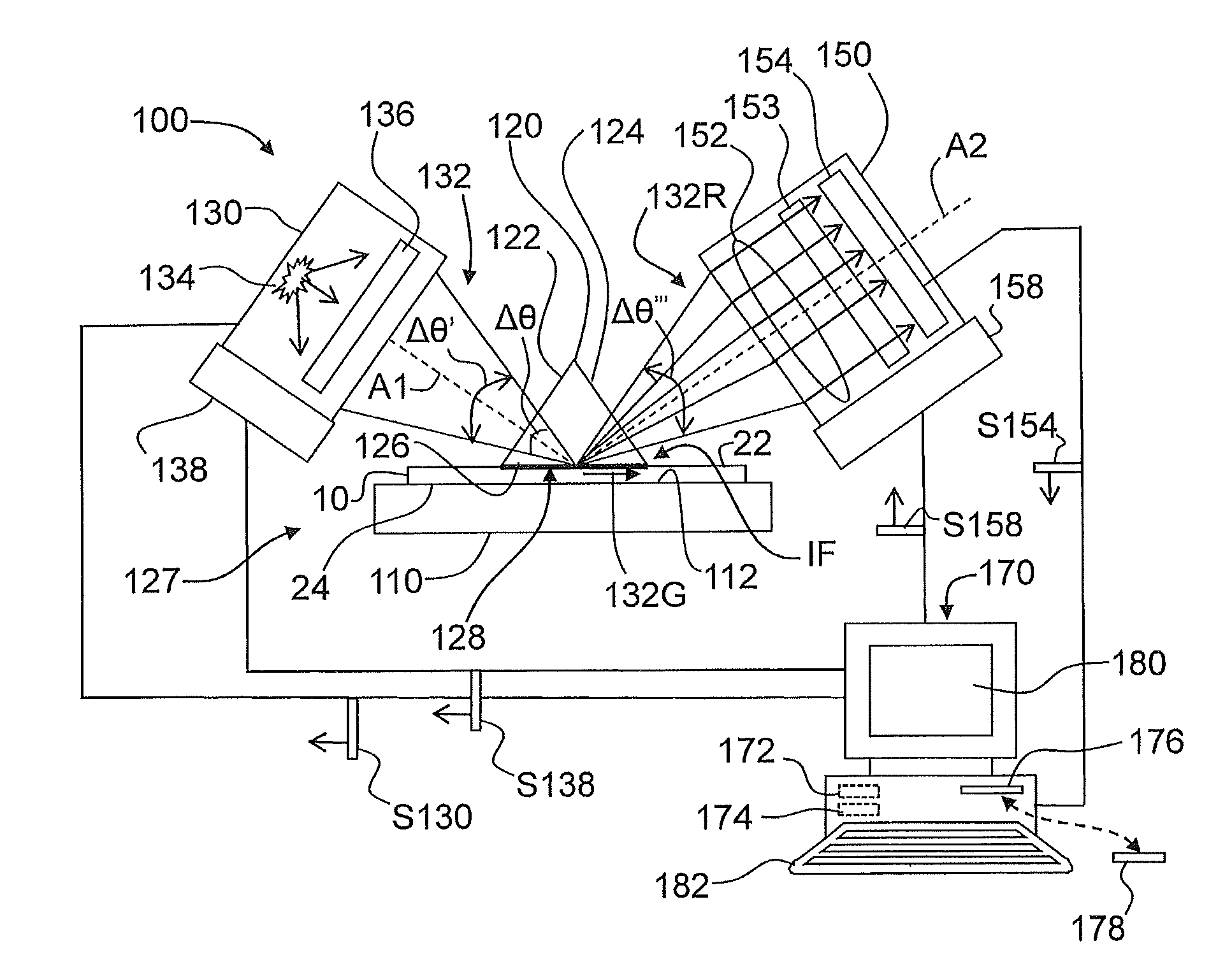Systems and methods for measuring the stress profile of ion-exchanged glass
a technology of stress profile and ion exchange glass, which is applied in the field of systems and methods for measuring the stress profile of ion exchange glass, can solve the problems of limited utility of measurements, non-destructive and efficient stress measurement techniques, and limited application
- Summary
- Abstract
- Description
- Claims
- Application Information
AI Technical Summary
Benefits of technology
Problems solved by technology
Method used
Image
Examples
example method
of Measuring the Stress Profile
[0065]As described above, an example system 100 receives in controller memory 170 at least one raw or initial image IM of the mode spectrum 220 as obtained by detecting reflected light 132R from prism-waveguide interface IF. As discussed above, raw or initial image IM includes information about the TM and TE guided modes (“eigenmodes”) of waveguide 50. In an example, raw or initial image IM includes a scale factor. FIG. 8 is similar to FIG. 5 and shows an actual raw or initial image IM of the TM and TE mode spectra 220TM and 220TE as captured by the photodetector array 154.
[0066]In an example, a raw or initial image IM is selected from memory 174 for processing by processor 172. In another example, the raw or initial image is directed straight to processor 172 for processing and the results are stored in memory 174. In the description below, the various image processing steps and calculations are carried out by processor 172 unless otherwise noted.
[006...
##b embodiment
TE-Mode IWKB Embodiment
[0111]In one aspect of the method, an IWKB procedure designed for the TE-mode is applied to extract the refractive index profiles n(z) affecting the propagation of both the TE and TM modes in the planar waveguide layer 50. The difference between the TE and TM refractive index profiles Δn(z) determines the stress profile S(z) via the stress-optic coefficient SOC per above.
[0112]It has been determined through modeling that for typical ion-exchange waveguides in glass, the systematic error introduced by applying a TE-mode-IWKB procedure to TM-waves is small enough that its effect on the recovered stress profiles S(z) can be considered negligible. A computer simulation was carried out that assumed no stress-induced birefringence in waveguide 50, so that both the TE and the TM modes experienced the same material refractive index. A coupling prism 120 with refractive index nP was part of the simulation, and an index-matching fluid 128 having refractive index nF inte...
PUM
| Property | Measurement | Unit |
|---|---|---|
| diffusion depth | aaaaa | aaaaa |
| thickness | aaaaa | aaaaa |
| thickness | aaaaa | aaaaa |
Abstract
Description
Claims
Application Information
 Login to View More
Login to View More - R&D
- Intellectual Property
- Life Sciences
- Materials
- Tech Scout
- Unparalleled Data Quality
- Higher Quality Content
- 60% Fewer Hallucinations
Browse by: Latest US Patents, China's latest patents, Technical Efficacy Thesaurus, Application Domain, Technology Topic, Popular Technical Reports.
© 2025 PatSnap. All rights reserved.Legal|Privacy policy|Modern Slavery Act Transparency Statement|Sitemap|About US| Contact US: help@patsnap.com



